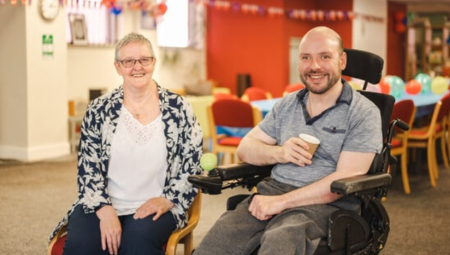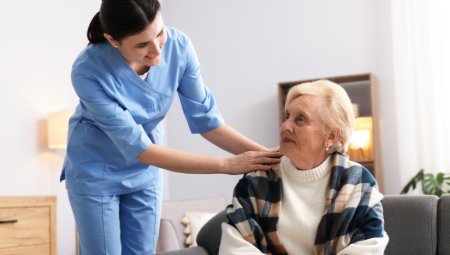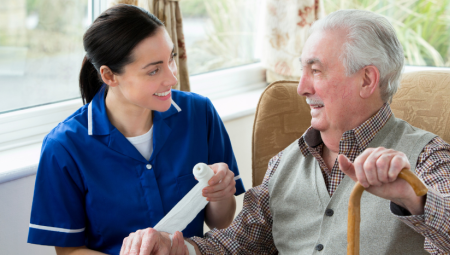Background
A pleural effusion is a build-up of fluid around the lung. In the UK, about quarter of a million people develop a pleural effusion each year, usually caused by advanced cancer or heart, kidney, or liver failure. People with a pleural effusion feel breathless and can’t do the things they want to. Draining the fluid improves breathlessness and quality of life. This can be done by inserting a semi-permanent tube called an indwelling pleural catheter. This is drained at home about three times a week, usually by a community nurse, but can be done by the patient or family/unpaid carer – this is called self-management. Self-management gives patients freedom to drain their catheter when needed, without waiting in for a nurse, and reducing community nursing services’ workloads. Despite these benefits, not all patients get the opportunity to self-manage.
Project Aims
Funded by the NIHR Research for Patient Benefit programme, this study aims to help more patients self-manage their indwelling pleural catheter if they want to by co-developing an intervention (with patients, carers and healthcare professionals) to support self-management.
Project Activity
Stage 1: We will talk to patients with indwelling pleural catheters as well as their families/carers to find out their views on self-management and what stops people who could self-manage from doing so. We know that patients with an indwelling pleural catheter can be frail. Often their families/carers are already doing a lot to support them. We will ask what might help them to self-manage if they would like to.
Stage 2: We will talk to healthcare professionals looking after patients with indwelling pleural catheters to understand what they think about self-management. This will include community nurses and the hospital teams who put indwelling pleural catheters in.
Stage 3: Along with our patients, their families/unpaid carers and healthcare professionals, we will hold workshops to design an intervention that will help people to self-manage indwelling pleural catheters. We don’t know what this intervention will look like yet. From talking to patients and families who already self-manage, we have found they like to learn from a demonstration on their own indwelling pleural catheter followed by supervised self-management until they feel confident. Therefore, our intervention may include training sessions for healthcare professionals on how to teach self-management.
Anticipated or actual outputs
A co-designed intervention to help people to self-manage their indwelling pleural catheter if they want to. The intervention may include training sessions for healthcare professionals on how to teach self-management.
Who is involved?
- Dr Adam Peel (Joint PI), Norfolk & Norwich University Hospital
- Prof Morag Farquhar (Joint PI), University of East Anglia
- Prof Eleanor Mishra - Norfolk & Norwich University Hospital
- Dr Geoffrey Brandon - PPI Representative
Contact
Adam Peel, Adam.Peel@nnuh.nhs.uk
Morag Farquhar, M.Farquhar@uea.ac.uk





